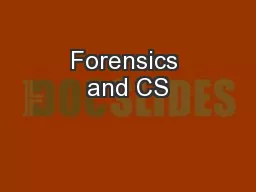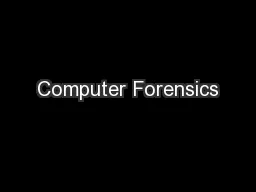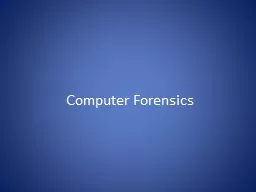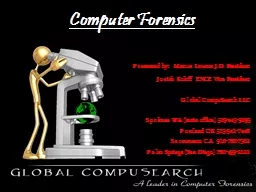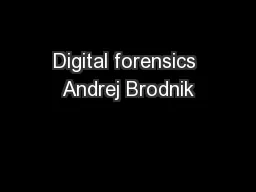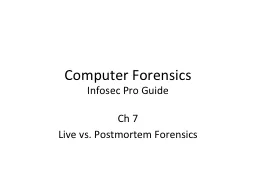PPT-Forensics and CS
Author : min-jolicoeur | Published Date : 2017-01-30
Philip Chan CSI Crime Scene Investigation wwwcbscomshows csi high tech forensics tools DNA profiling Use as evidence in court cases DNA Deoxyribonucleic Acid Each
Presentation Embed Code
Download Presentation
Download Presentation The PPT/PDF document "Forensics and CS" is the property of its rightful owner. Permission is granted to download and print the materials on this website for personal, non-commercial use only, and to display it on your personal computer provided you do not modify the materials and that you retain all copyright notices contained in the materials. By downloading content from our website, you accept the terms of this agreement.
Forensics and CS: Transcript
Download Rules Of Document
"Forensics and CS"The content belongs to its owner. You may download and print it for personal use, without modification, and keep all copyright notices. By downloading, you agree to these terms.
Related Documents

